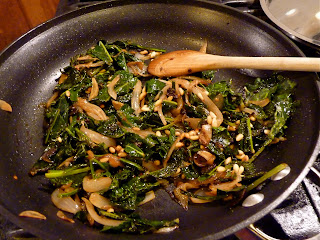The coffee at Swork in Eagle Rock helped.
The wine I purchased at the Colorado Wine Company should be of assistance this evening.
But lunch, just a little further down the street at Cacao Mexicatessen really made all the difference.
I'd read and heard many good things about, "L.A.'s First Gourmet Mexican Deli." Jonathan Gold raves about the duck tacos. Now, I know why.
The menu is much more extensive than I would have imagined. It took me some time to get my bearings, and I'll need a few more perusals of the take-out menu and a couple more visits, before I truly have a handle on all that Cacao Mexicatessen has to offer.
I went a little overboard because there were so many dishes that I wanted to try. I selected four tacos -- two meat and two vegetarian -- carnitas (roasted pork), the famous carnitas de pato (duck confit), flor de calabaza (squash blossom), and huitlacoche.
All of the tortillas are made by hand at the Mexicatessen. A great start to an excellent taco!
The chips are supposedly made in house as well, but they did not impress the way the tortillas did.
I'll say this. Vegetarians, come running!
What an outstanding offering of meatless dishes. You can chose to fill your tacos, sopes and burritos with anything from calabacitas (zucchini and corn) to flor de jamaica (hibiscus flowers) to portobellos. There may be mushrooms or corn tucked into your chile rellenos along with the melted cheese. You'll also find potato tacos and nopalitos (cactus paddle salad) on offer.
I finally got to taste huitlacoche, which is a delicious fungus that grows on corn.
Yes, it's the black smut in the picture above.
Corn truffle is their friendly euphemism. The huitlacoche taco comes with roasted corn, hominy, cotija cheese, onions, cilantro and a tasty red salsa. The huitlacoche itself has an earthy and slightly smoky flavor. I loved it.
The flor de calabaza taco possessed a mild vegetal flavor, thanks to the blossoms and the poblano strips. Delicious, but I think I prefer my squash blossoms deep-fried -- and stuffed with cheese.
My carnitas taco was very simple -- roasted pork, onions, cilantro, and red salsa. Really, exactly as it should be. And if it is possible for greasy roasted pork to taste clean and pure, they have managed this at Cacao Mexicatessen. Maybe not the best carnitas of my life, but very very solid.
I know to take Jonathan Gold seriously. So when he titles his entire review of Cacao Mexicatessen, "Duck Duck Taco," it is clearly with good reason.
The duck taco is undoubtedly the superstar for me today. It is gorgeous. The acidic crunch of the pickled onions is striking against the moist, perfectly oily duck confit and creamy avocado. I would happily eat more than one.
I am delighted to have this Mexicatessen just ten short minutes away. It will be very easy to share with A. and Fe.
Cacao Mexicatessen
1576 Colorado Blvd.
Los Angeles, CA 90041






















































